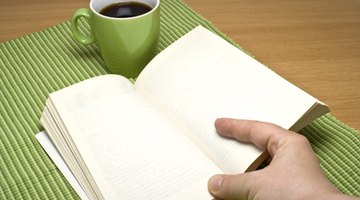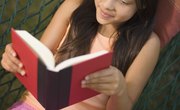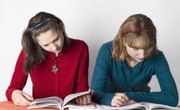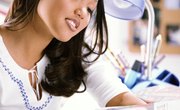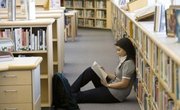Active reading skills act as a catalyst for critical thinking skills. And, when using critical thinking skills, you become an effective communicator and develop strong problem solving skills. If you use the strategies associated with actively reading, you will be able to recall and apply information as you read, to make your reading time as efficient as possible.
The Active Reading Definition
The acronym "ACTIVE" reading stands for asking questions, making connections, tracking down important information, inferring/predicting, visualizing and evaluating and synthesizing. No matter your age or what grade you are in at school, active reading helps you to better understand what you're reading, allowing you to apply what you've read to your overall schema. This can help make you a better reader, speaker, writer, etc. As you get older, using active reading strategies in college can help you be a more successful student.
"Asking" Questions About the Text
The first step in active reading is to ask yourself questions. Using a colored pen, circle new words that are unfamiliar to you. Underline concepts and phrases that confuse you and write the questions in the margins of the text or on a sticky note. Once you ask questions, your mind will seek to answer them and help you gain clarity. The main questions to ask are: what is your purpose for reading and what do you want to know after reading the material?
Making "Connections"
After asking questions, you'll have to try and make connections, which is easier when all the students have similar background knowledge. In order to become actively engaged in the reading process, you must make connections with the material. Pull from your past experiences or those of others that you may have heard about and connect them to the material. There are numerous ways that you can make connections while reading to include:
- Text to Text: Comparing to pieces of written material.
- Text to Self: The material you are reading to your own personal experiences.
- Text to World: The material you are reading to the world as a whole.
"Tracking" Down Important Information
The next step in ACTIVE reading is to track down information. In order to track down important information, you must be clear on your purpose for reading. Understanding internal and external text structures is also helpful. Internal text structure is the way in which a piece of writing is organized. External text structure is how the text is set up. Highlight all information that you consider important or worthy. Answer the questions that you came up with in the first step of actively reading.
Use What You Know and Learn to "Infer"
The equation for an inference involves taking what you know and adding it to what you've learned to reach your inference. You are in actuality drawing conclusions that go beyond what you have read. When you make a prediction you forecast what will come later in the material. Predictions will be answered by the end of the story, while inferring is a current analysis of what is going on in the story and may or may not be answered by the end of the story.
"Visualize" the Text You're Reading
When you are thoroughly involved in reading, a movie should take place in your mind. This is called visualizing. These mental images are connected to your past experiences. Reading will become three-dimensional, and it will help you retain the information long after you have encountered the material. This also assists with inference. Visualizing requires the use of your five senses. This imagery that is created can also transcend over to writing.
Lastly, "Evaluate" and Synthesizing
Finally, apply reasoning to what you have read and the conclusions that you have drawn. Locate the facts and opinions. Summarize the information. Add your own thoughts to what you have summarized from the new material. Analyze the content. Do you agree or disagree with the information? Why?
Answering these questions lead to a higher level of thinking. Now you must take the time and reflect on what you have read and gained from the material. Once you get to the step of evaluating and synthesizing, you should have a deeper understanding of the text.
Related Articles
References
Writer Bio
Based in the DC metro area, Shay Nicole is a freelance writer and blogger. She has a professional background in marketing and education and is currently working on a fiction book. Nicole received a Bachelor of Arts in international business from Strayer University.

